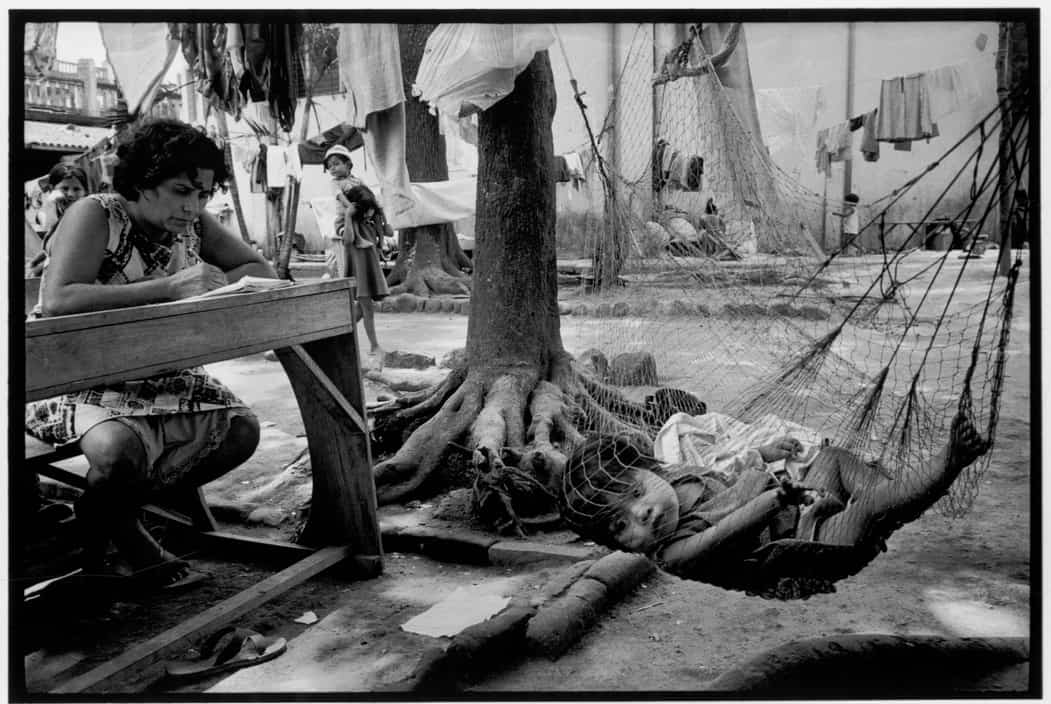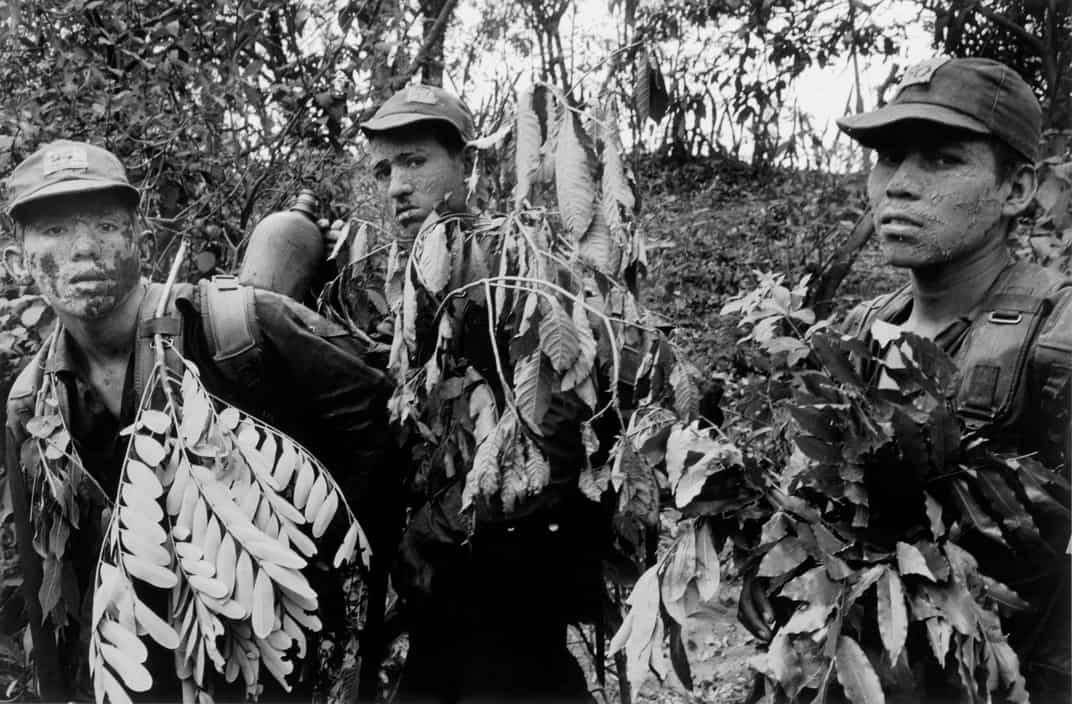The Salvadoran Civil War was a conflict between the military-led government of El Salvador and the Farabundo Marti National Liberation Front (FMNL), a coalition of five left-wing guerrilla groups.
In the late nineteenth century, coffee exportation became a vital source of income for El Salvador, comprising of 95% of the country’s income. The coffee revenue, however, was only divided among 2% of the population creating stark wealth inequality. In 1932, the Central American Socialist Party was formed and lead to a peasant uprising. The Salvadorian government suppressed this uprising in what became known as La Matanza, the massacre, in which the military murdered between 10,000-40,000 people. This uprising gave the Salvadorian military cause to take control of the government. As a result of the 1973 oil crisis and rising food prices, land reforms were attempted to redistribute farmland to the peasant population. These reforms failed because of opposition from the elite and malcontent with the government was reinforced more deeply among the populace.
The 1977 election held on February 20, which saw the victory of General Carlos Humberto Romero and the National Conciliation Party was marred by blatant fraud and voter intimidation by the government-sponsored paramilitary ORDEN. The disenfranchised population staged protests against the election fraud and on February 28, security forces killed between 200-1,500 demonstrators and bystanders alike.
On October 15, 1979, the Revolutionary Government Junta (JRG) deposed President Gen. Romero in a coup. The United States gave the JRG a military training team and $5.7 million. The JGR restricted land holdings, nationalized the banking, coffee and sugar industries, scheduled elections, and disbanded the paramilitary death squad ORDEN.
“The immediate goal of the Salvadoran army and security forces—and of the United States in 1980, was to prevent a takeover by the leftist-led guerrillas and their allied political organizations. At this point in the Salvadoran conflict, the latter were much more important than the former. The military resources of the rebels were extremely limited and their greatest strength, by far, lay not in force of arms but in their “mass organizations” made up of labor unions, student and peasant organizations that could be mobilized by the thousands in El Salvador’s major cities and could shut down the country through strikes.”
– Central America, US Policy. Bureau of Public Affairs
ADVERTISEMENT - CONTINUE READING BELOW
As the military government began to expand its violence towards its citizens, not only through death squads but military enforcement as well, anybody that questioned official policy, were viewed as hostiles. The FMLN began their insurrection on January 10, 1981, with attacks on military targets throughout the country. The JRG declared martial law in May 1979. Between January 12 and February 19, 1981, 168 people were killed by security forces for breaking curfew.
In efforts to defeat the insurgency, the Salvadoran Armed Forces targeted the civilian population by displacing or killing civilians in order to remove any possible base of support for the rebels. “This may be an effective strategy for winning the war. It is, however, a strategy that involves the use of terror tactics—bombings, strafing, shelling and, occasionally, massacres of civilians.” (Americas Watch Committee)
Beginning in 1983, guerilla strongholds were found by U.S. reconnaissance planes that relayed intelligence to the Salvadoran military. Amnesty International identified “regular security and military units as responsible for widespread torture, mutilation and killings of noncombatant civilians from all sectors of Salvadoran society.”
In 1982, the FMLN began calling for a peace settlement that would establish a “government of broad participation” while at the same time increasing their attacks on the government military. The United States Embassy estimated the damage to the economic infrastructure at US$98 million.
The Apaneca Pact was signed on 3 August 1982, establishing a Government of National Unity, whose objectives were peace, democratization, human rights, economic recovery, security and a strengthened international position. Lack of agreements within this tentative government prevented any substantive changes from being made. During 1982-1983, government forces killed about 8,000 civilians per year. In the 1984 elections, Christian Democrat Jose Napoleon Duarte won the presidency with two million dollars of CIA financial support.
After 10 years of war, more than one million people had been displaced out of a population of 5.3 million. The death squad activities continued to escalate into the 1990s. In 1991, President Bush authorized $42.5 million in military aid to the Salvadoran armed forces. By April 1991, negotiations resumed and the Salvadoran Civil War ended in 1992 with the signing of the Chapultepec Peace Accords.
Between 1980-1992, the Commission on the Truth for El Salvador concluded that more than 70,000 people were killed. More than 25% of the populace was displaced as refugees. Despite mostly killing peasants, the Government readily killed any opponent they suspected of sympathy with the guerrillas—clergy (men and women), church lay workers, political activists, journalists, labor unionists (leaders, rank-and-file), medical workers, liberal students and teachers, and human-rights monitors.
FMLN continuously violated the human rights of many Salvadorans and other individuals identified as right-wing supporters, military targets, pro-government politicians, intellectuals, public officials, and judges. These violations included kidnapping, bombings, rape, and killing.

ADVERTISEMENT - CONTINUE READING BELOW

ADVERTISEMENT - CONTINUE READING BELOW

ADVERTISEMENT - CONTINUE READING BELOW

ADVERTISEMENT - CONTINUE READING BELOW

ADVERTISEMENT - CONTINUE READING BELOW

ADVERTISEMENT - CONTINUE READING BELOW

ADVERTISEMENT - CONTINUE READING BELOW

ADVERTISEMENT - CONTINUE READING BELOW

ADVERTISEMENT - CONTINUE READING BELOW

ADVERTISEMENT - CONTINUE READING BELOW

ADVERTISEMENT - CONTINUE READING BELOW

ADVERTISEMENT - CONTINUE READING BELOW

ADVERTISEMENT - CONTINUE READING BELOW

ADVERTISEMENT - CONTINUE READING BELOW

